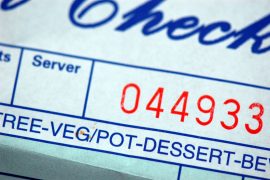This morning at 6:00 a.m., I gave my 10 year old $25 and sent her off to the racetrack.
It’s Preakness weekend here in Baltimore, and just a few blocks from my house, Pimlico Racetrack will host the 136th Annual Preakness Stakes. It’s a half-day at school today, and one of my daughter’s friends is totally into horse racing. Besides, she has adult supervision.
But I probably should have taught her a little bit about odds.
Preakness is the second leg of the Triple Crown, and all eyes will be on Animal Kingdom, the 20-1 long shot who won the Kentucky Derby in early May. Animal Kingdom isn’t a long shot anymore. At the Preakness, his odds are 2-1.
Where do these numbers come from? Betting on horse racing is a popularity contest. In other words, the payoff depends on the bets themselves. People like a winner, and so they tend to bet on the favored horse.
That means that the favored horse will have the best odds — and the lowest payoff. And that’s why Animal Kingdom was such a great win at the Derby. Odds like 20-1 suggest that the horse is not expected to win. It’s the unusual event that every better wants in on.
But while it’s easy to see which horse is favored to win, it’s a little tougher to figure out the payoff. Here’s a quick look at how it will work at the Preakness. To make things simple, we’ll just consider a $2 bet on Animal Kingdom, who currently has 2-1 odds. (Those odds will change as we get closer to the race.)
First multiply the amount of the bet by the first number in the odds ratio:
$2 x 2 = $4
Easy enough, right? Now divide by the second number in the odds ratio:
$4 ÷ 1 = $4
And finally, add the amount you bet, and that’s your payoff:
$4 + $2 = $6
So if you place a $2 bet on Animal Kingdom with 2-1 odds — and he wins — you’ll get a $6 payoff.
Clearly, things get a little more complicated with different odds. So let’s look at another example. What if you wanted to place a $2 bet on Dialed In, another Preakness contender? This horse currently has 9-2 odds.
$2 x 9 = $18
$18 ÷ 2 = $9
$9 + $2 = $11
So placing the same $2 on a horse with 9-2 odds, means a bigger payoff ($11), if the horse wins. How come?
Higher odds have lower payoffs. A long-shot (like Animal Kingdom in the Kentucky Derby) has lower odds, so if they do win, the payoff can be pretty big.
Problem is, it’s not likely that a horse with low odds will win the race. And that’s why Animal Kingdom’s win in the Derby was such a big deal. Still, horses with higher odds have won the Kentucky Derby. In 1913, Donerail won with 91.45-1 odds!
Of course, the more you bet, the more you’ll win — if your horse wins. Take a look at a $150 bet on Dialed In at 9-2 odds:
$150 x 9 = $1,350
$1,350 ÷ 2 = $675
$675 + $150 = $825
Not a bad take. Still it’s a gamble, and that’s why plenty of people lose. To learn more, visit the Preakness website, which includes a great tutorial on betting the horses.
What do you think Animal Kingdom’s chances of winning the Preakness are? Do we have another Triple Crown winner on our hands? Give us your odds in the comment section.






